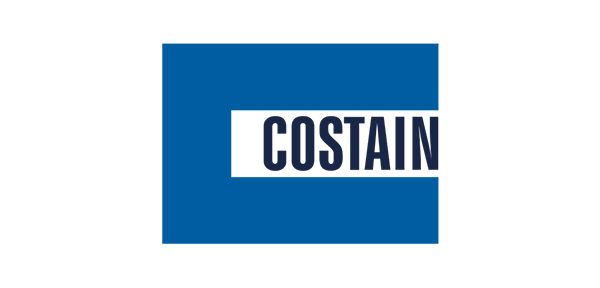Delivering cost-effective, sustainable infrastructure projects
Costain uses ArcGIS as a strategic enterprise tool to help it deliver cost-effective and sustainable infrastructure projects. By making ArcGIS solutions available to all employees from engineers and environmentalists to asset inspectors and project managers, the organisation is making multi-million pound cost savings, accelerating processes and delivering pioneering biodiversity schemes.
All project information, including BIM and third party data is made accessible to teams via ArcGIS web apps
Environmental surveys and asset maintenance checks are carried out on mobile devices using ArcGIS field apps
Live data from the field is analysed and shared on ArcGIS Dashboards to improve decision making
The Challenge
Large infrastructure projects depend on large volumes of geospatial information. Designers, engineers, planners, environmentalists and project managers all need to be able to collect, analyse and share data on everything from the locations of assets to biodiversity on construction sites. Costain decided to expand its use of geographic information system (GIS) technology to put geospatial data at the heart of its business and use it even more effectively to enable safer, faster, better, greener and more efficient programme delivery.
“We estimate that we save millions of pounds by using ArcGIS across our large infrastructure projects, which enables us to make competitive bids and deliver even more cost-effective services for our clients.”
Sophie Stouki, Group Head of GIS, Costain
The Solution
Costain started by building a single portal for all geospatial information, for the entire organisation, using ArcGIS Enterprise. Then, it developed a series of ArcGIS web apps to provide specific groups of employees with the capabilities they need to access data pertinent to their contracts and perform their jobs.
Chief amongst these web apps is a solution called ‘Costain on a map’ that provides all employees with a gateway to the company’s growing reservoirs of geospatial data, as well as data from other systems, such as HR and Building Information Modelling (BIM), as well as remote sensors and unmanned aerial vehicles (UAVs). “The ability of ArcGIS to collate data from many internal and third party sources and make it available to lots of people via a web browser is really powerful,” says Sophie Stouki, Group Head of GIS at Costain.
Costain also developed a suite of ArcGIS field apps, for collecting and viewing data on mobile devices about everything from the locations of trees and archaeology to the condition of assets and the views of stakeholders.
This live data is then displayed on ArcGIS Dashboards, where it can be used for reporting and data analysis.
ArcGIS is currently used by around 1,200 employees including:
- Designers for visualising their designs in 2D and 3D in their geographic context
- Engineers for better understanding how schemes interact with the topology of the area
- Environmentalists for carrying out biodiversity and archaeology surveys in the field and analysing their findings
- Project managers for scheduling works in the field and understanding which assets will be where at each phase of the project
- Planners for improving their understanding of the implications of delayed deliveries or bad weather
- Road inspectors for managing 150,000 assets as part of a large highways and road maintenance contract
- Contact centre staff for responding to telephone queries, noting asset defects and passing on information to maintenance teams.
“ArcGIS allows us to be smarter in how we collect, analyse, and visualise environmental data, making the implementation of innovations that reduce environmental impacts more feasible on a larger scale.”
Katie Dawson, GIS Lead for Environment, Costain
Benefits
Multi-million pound cost savings
The enterprise-wide adoption of ArcGIS has eliminated the need for Costain to pay external contractors to create GIS apps. Furthermore, everyone in the organisation, from engineers to ecologists, has easy access to the live data they need to make better decisions and deliver quality projects, quickly and more cost effectively. “We estimate that we save millions of pounds by using ArcGIS across our large infrastructure projects, which enables us to make competitive bids and deliver even more cost-effective services for our clients,” says Stouki.
Substantial time savings
Throughout the business, teams are now able to work even more efficiently, both in the field and in the office. For instance, a team of ten environmental specialists has saved as many as 18 hours a week by using ArcGIS to gain rapid access to environmental data, reducing the duration of a key client project. One of Costain’s asset maintenance processes is significantly faster than before, due to the seamless integration and instant availability of data from the field. Furthermore, the use of ArcGIS apps, field-based solutions, dashboards and other geospatially-enabled systems has saved time in the delivery of key utility works.
More effective collaboration
ArcGIS significantly improves collaboration in large, multi-disciplinary teams by improving access to project data and facilitating communication. For example, Costain has used ArcGIS Survey123 to develop a form-based method of allowing teams to submit feedback on project designs. “Communication between project teams is now much faster than with paper-based processes,” Stouki says.
Smarter implementation of biodiversity schemes
Environmentalists use ArcGIS to collect habitat data in the field, model how the environment will be impacted by projects and devise plans to reinstate habitats once construction has been completed. “ArcGIS allows us to be smarter in how we collect, analyse, and visualise environmental data, making the implementation of innovations that reduce environmental impacts more feasible on a larger scale,” says Katie Dawson, GIS Lead for Environment at Costain.
Reduced risk of redesigns and delays
With the wealth of data that can be accessed and visualised through ArcGIS, designers can create feasible designs from the outset and, if needed, make timely changes along the way that do not impact project schedules and costs. Equally, planners can view live data on shipments and weather within ArcGIS to better plan the sequence of works. “The insight that ArcGIS provides helps us to mitigate the risks of additional design costs and project delays,” Stouki says.



